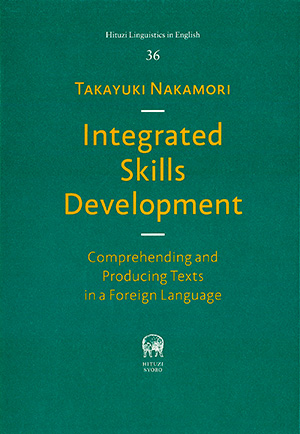2023年10月刊行

Integrated Skills Development
Comprehending and Producing Texts in a Foreign Language
中森誉之(Takayuki Nakamori)著
菊判上製 定価11000円+税
ISBN978-4-8234-1205-9
白井敬尚形成事務所(ブックデザイン)
 |
Integrated Skills DevelopmentComprehending and Producing Texts in a Foreign Language中森誉之(Takayuki Nakamori)著 菊判上製 定価11000円+税 ISBN978-4-8234-1205-9 白井敬尚形成事務所(ブックデザイン) |


